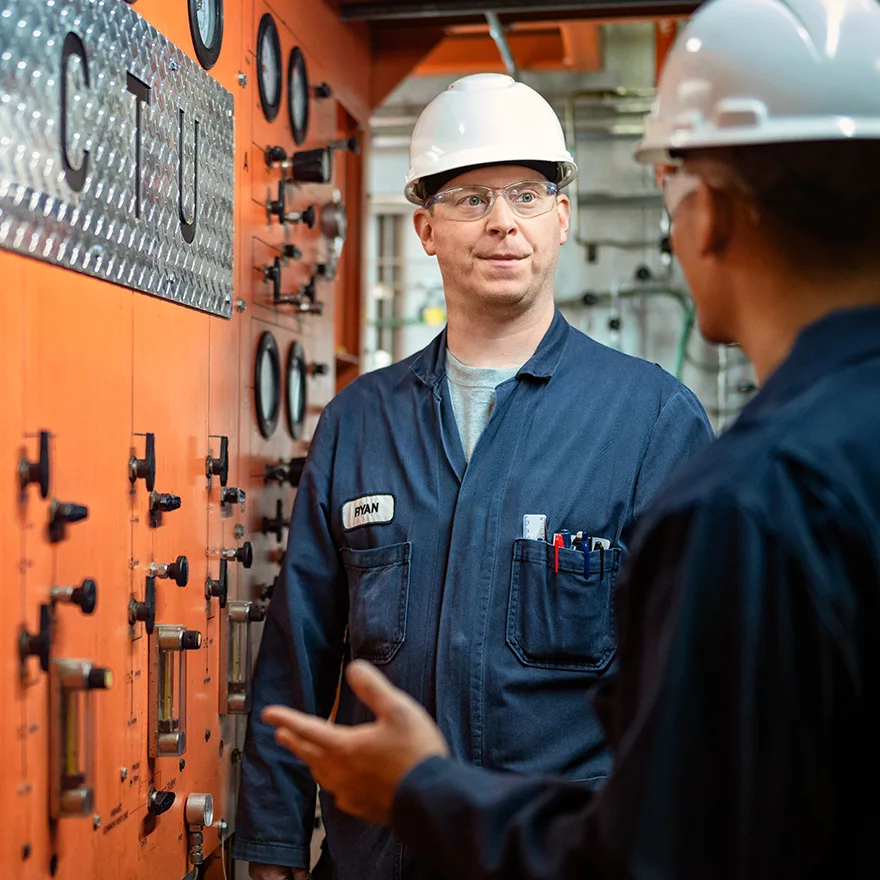
The Pathways Alliance has released a list of innovative technologies that it plans to progress to reduce emissions from oil sands operations. These emerging technologies encompass a broad spectrum of work, everything from supplementing the diesel that powers mine haul trucks with electricity, to exploring the potential of zero emission geothermal energy to heat water used in oil sands mining operations.
Once Pathways Alliance companies can demonstrate that the new technologies and approaches work efficiently, their deployment will have a big impact on emissions reduction in the oil sands—and could be widely applied in other industries in Canada and abroad.
Pathways Alliance members, six oil sands companies that represent about 95 per cent of Canada’s oil sands production, recognize that no single technology will solve the entire emissions challenge. “Leading-edge technology is one of the most important tools we possess to unlock new approaches to significantly reduce carbon dioxide (CO₂) emissions on a global scale, but a range of solutions is required,” said Kendall Dilling, president of the Pathways Alliance. Partnerships and collaboration is essential to accelerate the time it takes to bring these new technologies to commercial deployment, he said.
Developing innovation is a huge undertaking that requires a lot of science, energy and money, and Pathways Alliance members are building on existing relationships and forming new ones with a wide range of partners to realize next generation clean technologies. These include leading academic institutions, world-renowned research facilities, innovation incubators and other organizations in the innovation ecosystem, and governments. Through collaboration they can achieve industry’s goal to reduce absolute emissions by 22 million tonnes by 2030 and to net zero by 2050.
Pathways companies have also pooled staff resources and expertise – several hundred scientists, engineers, and other experts – to execute on the technology development plan.” “Our members have a long track record of world-class research and development investments to build on,” Dilling said. Between 2012 and 2021, Pathways companies invested more than $10-billion in technology research and development. Some of these helped industry reduce CO₂ emissions per barrel by about 20 per cent between 2009 and 2020, according to S&P Global.
The technologies prioritized for collaboration and acceleration through Pathways Alliance include:
- Carbon Capture Utilization and Storage (CCUS) technology development projects, such as:
- Piloting next generation technologies, including those developed by Svante and the use of Molten Carbonate Fuel Cells.
- Continuously improving capture plants to improve energy and cost efficiency.
- Identifying and developing plans to reduce the cost of next generation capture technologies.
- Evaluating the feasibility of CO₂ sequestration in depleted gas fields.
- Natural Gas Decarbonization and Hydrogen use to remove a high percentage of carbon from natural gas streams prior to combustion in oil sands facilities.
- Identify and evaluate technologies to remove carbon from natural gas before it is combusted.
- Undertaking feasibility studies for deploying hydrogen as a substitute fuel to displace natural gas use.
- Evaluating technology options for converting carbon in natural gas and flue gas into economically useful products.
- Steam reduction technologies to reduce the need for steam in bitumen production.
- Piloting next generation high-concentration solvent technology developed in Imperial Oil’s oil and gas research centre.
- Exploring solvent-assisted optimization of Steam Assisted Gravity Drainage (SAGD) facilities.
The Pathways technology development plan also includes work on other key technologies needed to achieve net zero by 2050 including:
- Switching fuel and electrification of mine haul truck.
- Use of geothermal energy to produce hot water and steam to reduce emissions.
- Advancing approaches to better manage fugitive emissions.
- In pit extraction processes to minimize mine hauler fleet and associated emissions.
- Advancing direct air capture technology to remove CO₂ from the ambient air for underground storage and/or conversion to liquid fuels.
- Assessing the future viability of small modular reactors – safe, versatile, and scalable technology that could supply zero-emissions energy for various oil sands applications.
The organization plans to invest $24.1-billion before 2030, with anticipated co-funding support from Canadian governments. Approximately $16.5-billion will support the proposed Carbon Capture and Storage (CCS) network and $7.6-billion will go towards other major emissions reduction projects and new and emerging technologies.
To learn more about Pathways Alliance and its unprecedented level of collaboration to develop and deploy technologies to reduce emissions by visiting https://pathwaysalliance.ca/cleartheair.

Our people, their stories
Passionate, dedicated people are behind every innovation and every step forward.